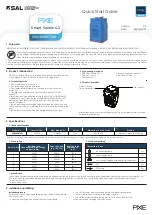
1-22
Configuring Re-DHCP Portal Authentication with Extended Functions
Network requirements
z
The host is directly connected to the switch and the switch is configured for re-DHCP
authentication. The host is assigned with an IP address through the DHCP server. Before portal
authentication, the host uses an assigned private IP address. After passing portal authentication, it
can get a public IP address.
z
When users using the host have passed identity authentication but have not passed security
authentication, they can access only subnet 192.168.0.0/24. After passing the security
authentication, they can access unrestricted Internet resources.
z
A RADIUS server serves as the authentication/accounting server.
Figure 1-13
Configure re-DHCP portal authentication with extended functions
Configuration procedure
z
For re-DHCP authentication, you need to configure a public address pool (20.20.20.0/24, in this
example) and a private address pool (10.0.0.0/24, in this example) on the DHCP server. The
configuration steps are omitted. For DHCP configuration information, refer to
DHCP Configuration
in the
IP Services Volume
.
z
For re-DHCP authentication, the switch must be configured as a DHCP relay agent (instead of a
DHCP server) and the portal-enabled interface must be configured with a primary IP address (a
public IP address) and a secondary IP address (a private IP address).
z
You need to configure IP addresses for the devices as shown in
Figure 1-13
and ensure that routes
are available between devices.
z
Perform configurations on the RADIUS server to ensure that the user authentication and
accounting functions can work normally.
Configure the switch:
















































